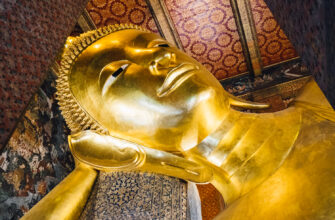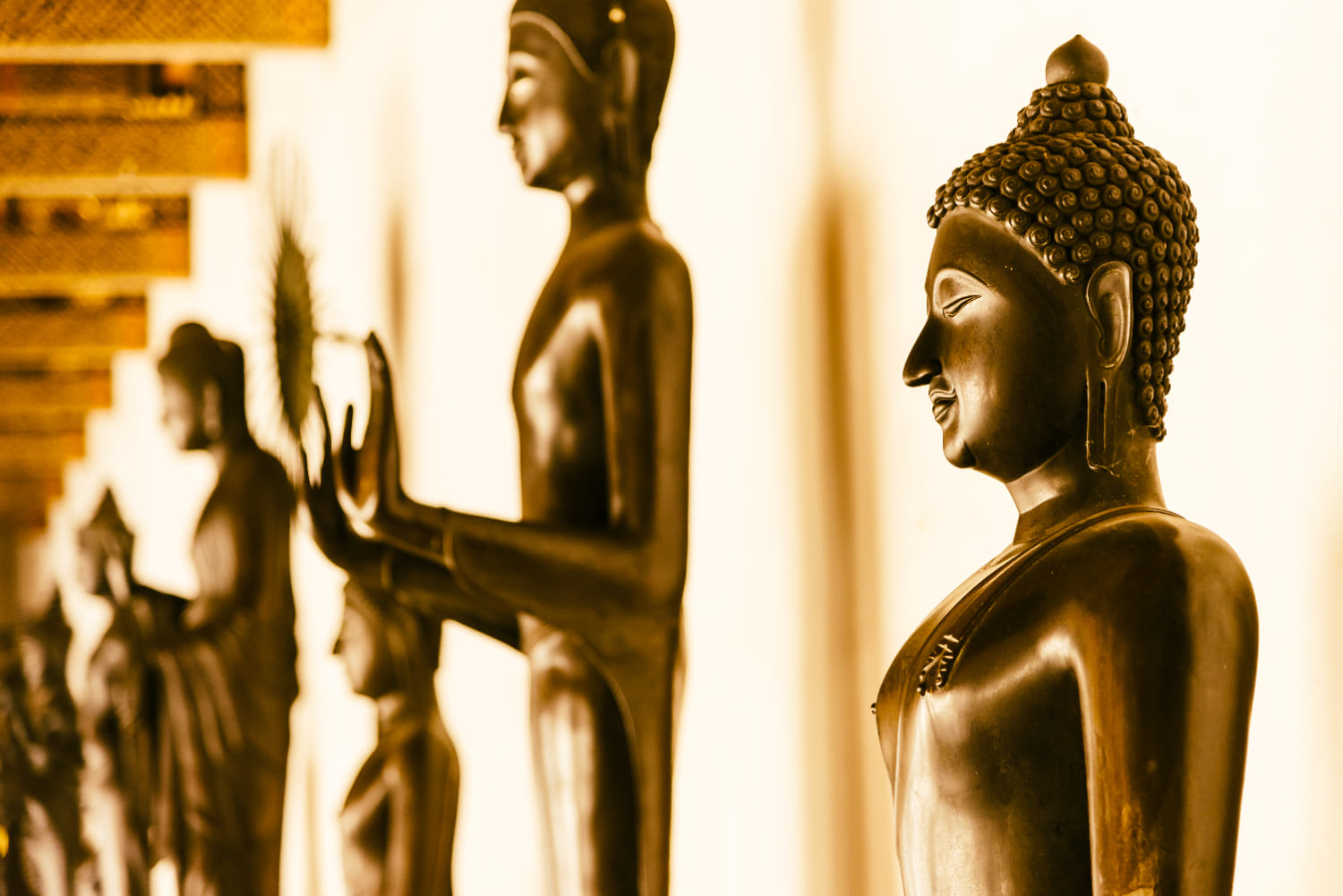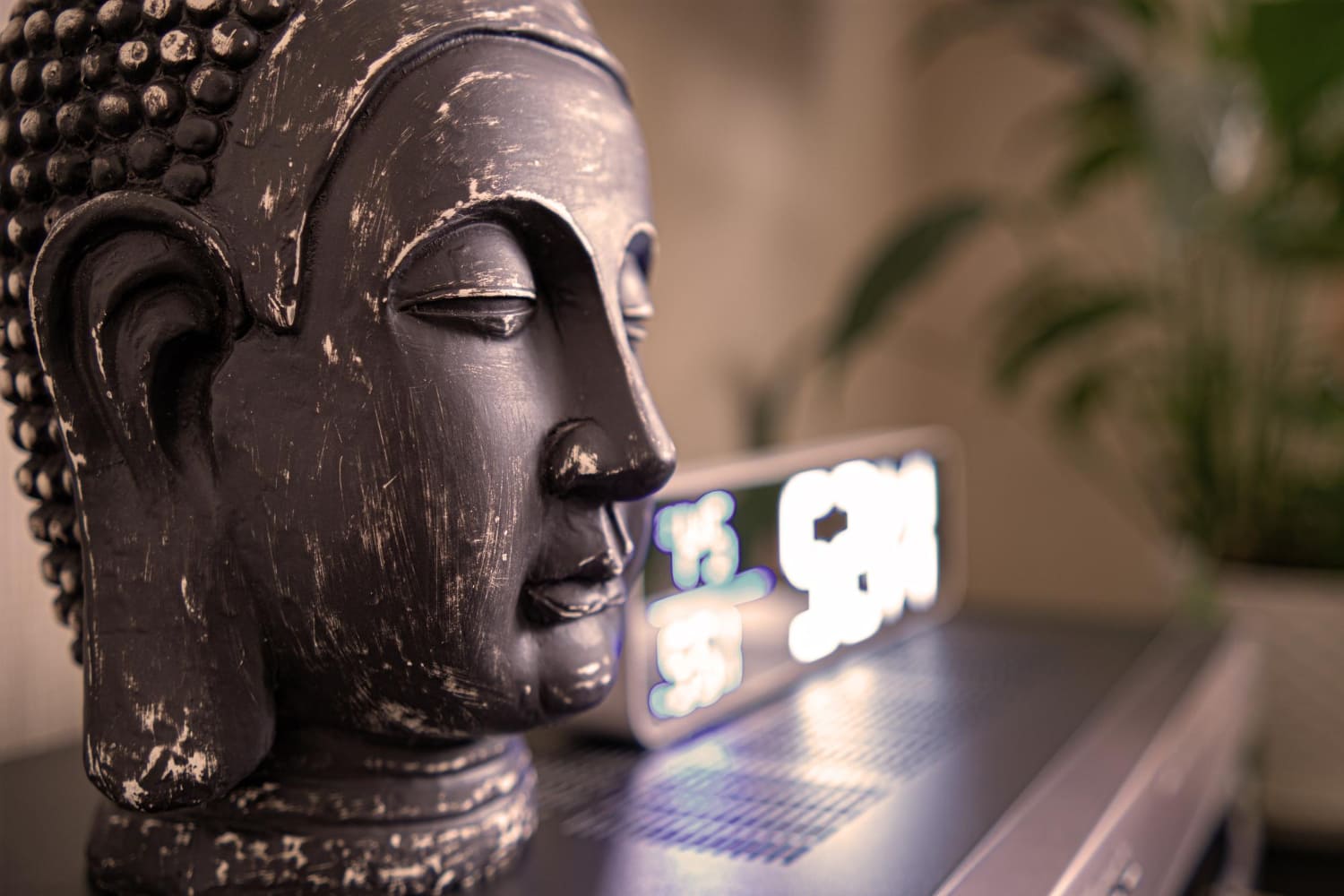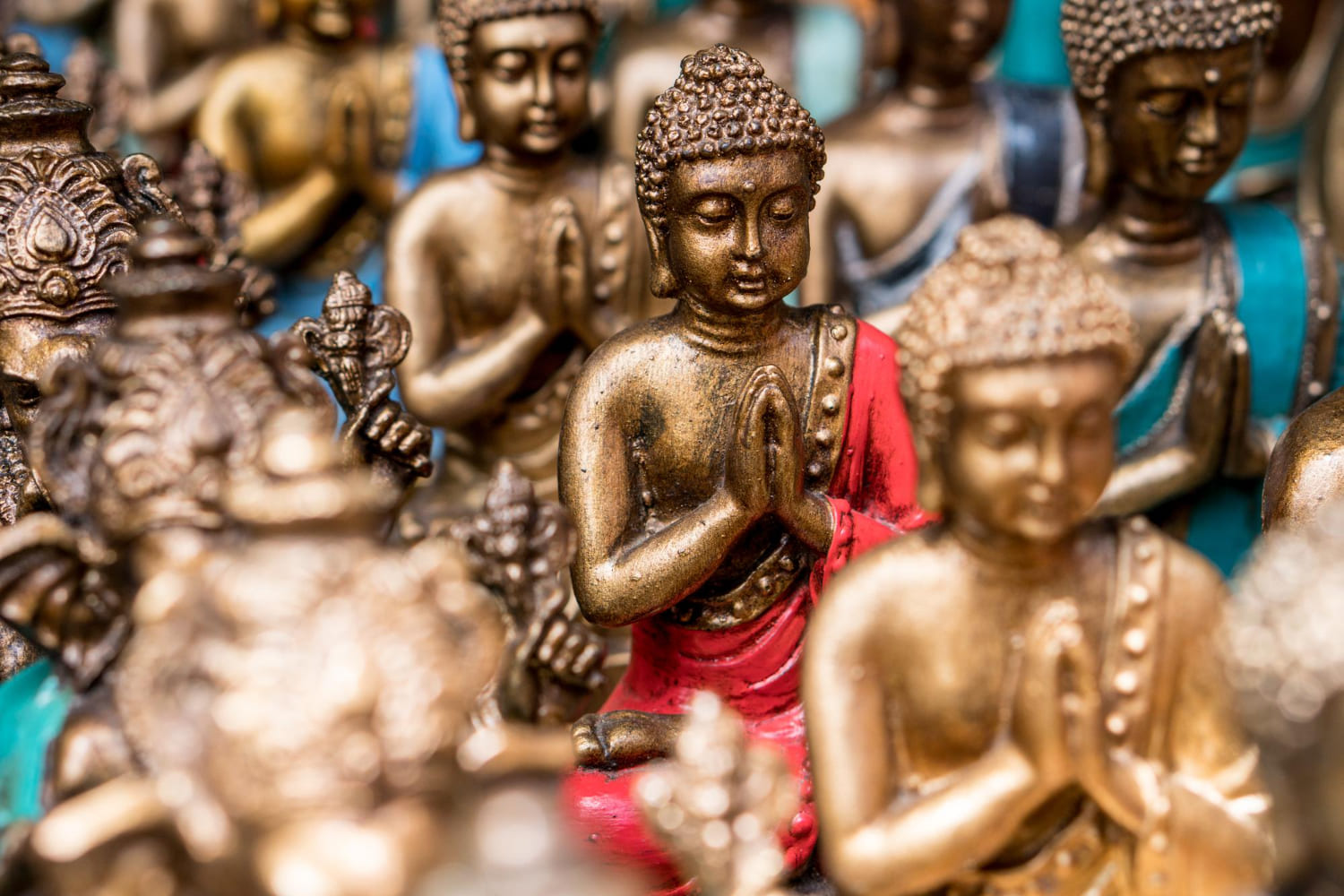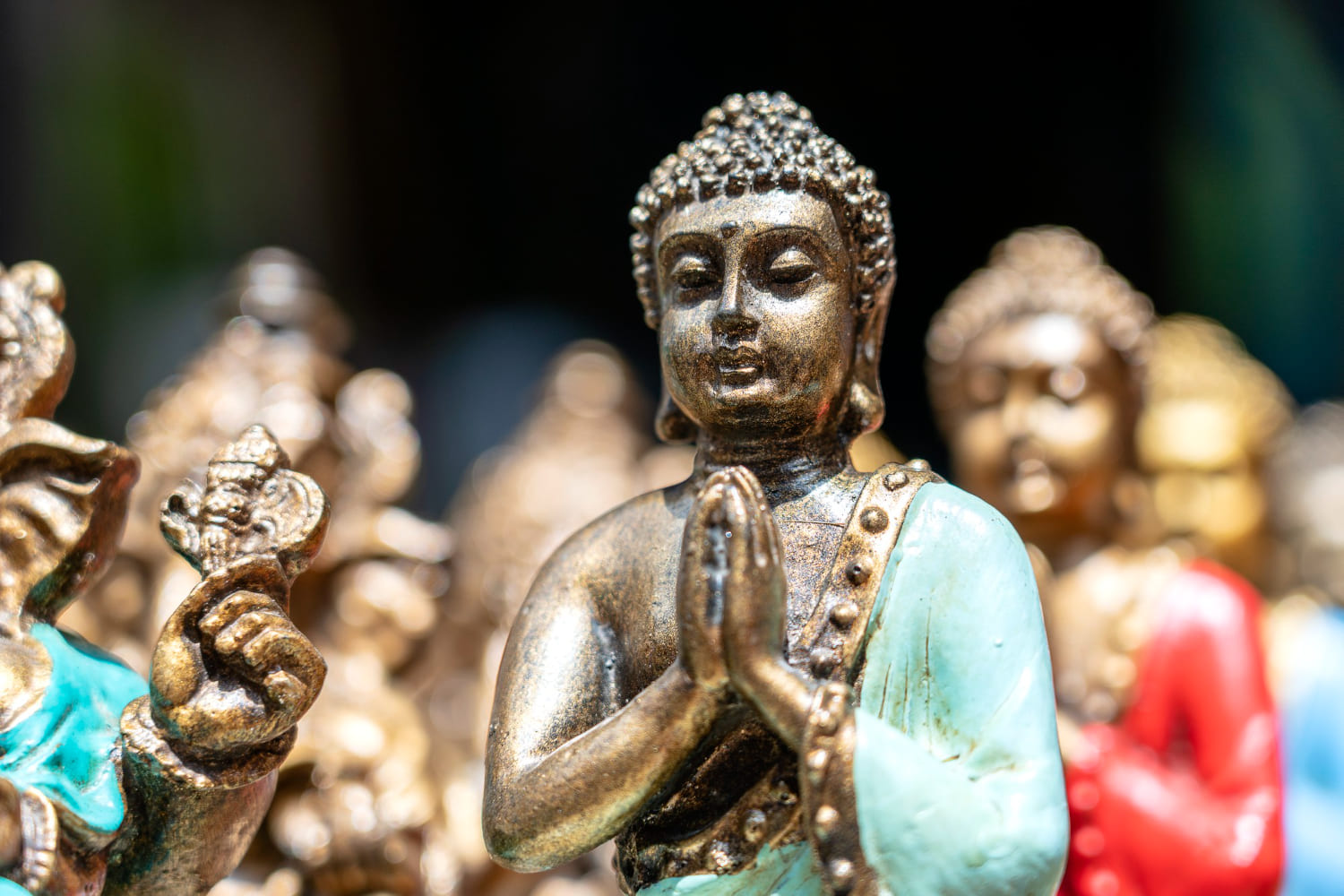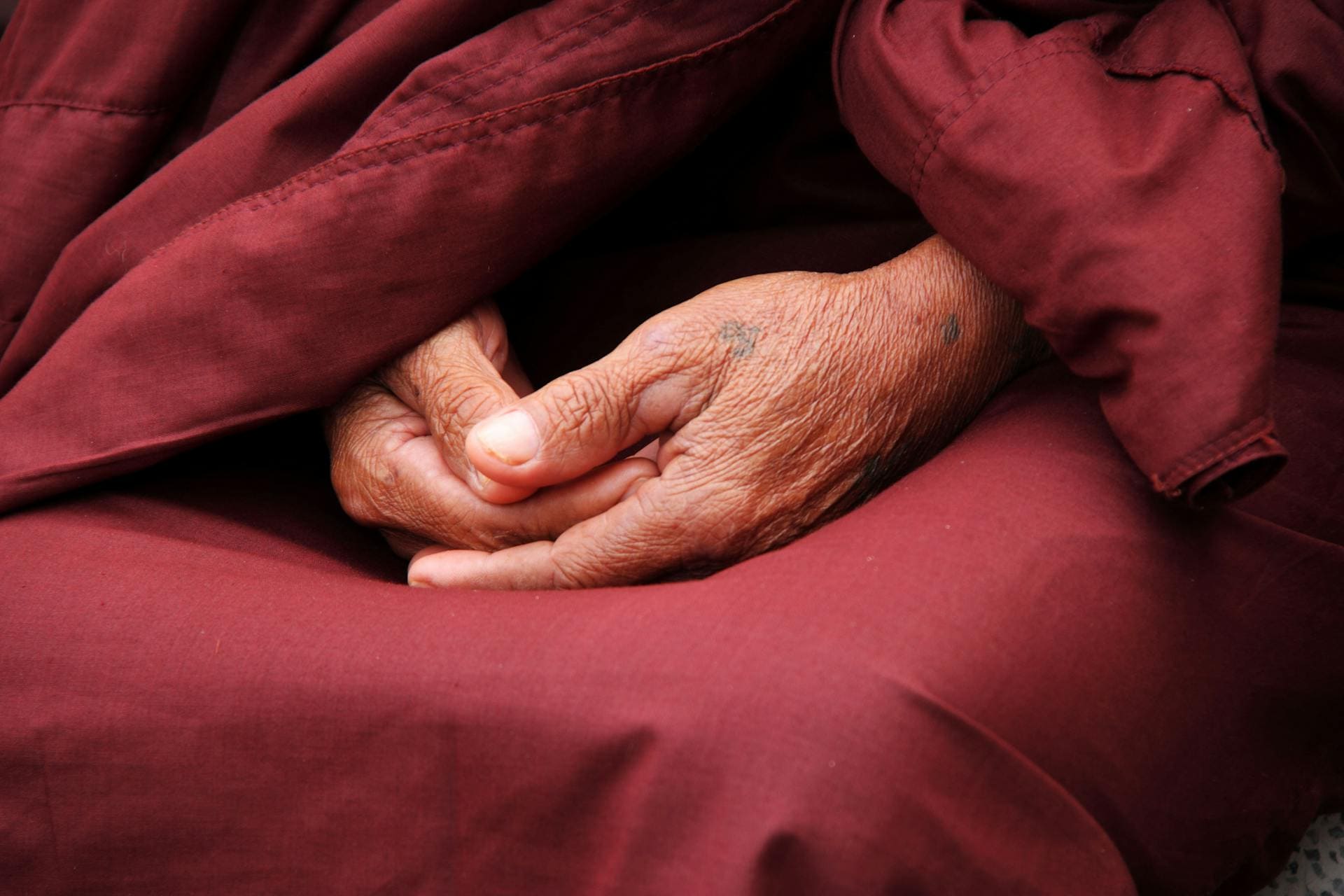Buddhism is a religion that is known for its rich symbolism. The use of symbols is an integral part of Buddhist practice, and each symbol has a specific meaning that is meant to help practitioners deepen their understanding of the teachings.
From the Buddha’s eyes to the lotus flower, there are many symbols that are commonly associated with Buddhism.
In this article, we will provide a full list of Buddhist symbols and their meanings. We will explore the most common symbols, as well as some lesser-known ones, and discuss their significance in Buddhist practice.
Whether you are a seasoned practitioner or simply interested in learning more about Buddhism, this guide will provide you with a comprehensive overview of Buddhist symbols.
The History of Buddhist Symbols
Buddhism is a religion that originated in India and spread to Central and Southeast Asia, China, Korea, and Japan. The religion has played a central role in the spiritual, cultural, and social life of Asia.
One of the most striking features of Buddhism is its use of symbols. These symbols are rich in meaning and have a long history that dates back to the time of the Buddha.
The earliest Buddhist symbols were associated with the Buddha himself.
For example, the Buddha footprint, which is found in many early Buddhist sites, was believed to be an imprint of the Buddha’s foot. The stupa, which is a dome-shaped structure that contains the Buddha’s relics, was also an important symbol in early Buddhism.
As Buddhism spread, new symbols were added to the tradition. Many of these symbols were borrowed from the culture and religion of the regions where Buddhism was practiced.
For example, the lotus flower, which is a symbol of purity and enlightenment, was a common symbol in Indian art and religion before it was adopted by Buddhists.
The Eight Auspicious Symbols of Buddhism, which originated in Indian iconography, are among the most important symbols in the tradition.
These symbols include the parasol, the golden fish, the conch shell, the lotus flower, the vase, the banner, the wheel, and the knot of eternity. Each symbol has its own meaning and represents a different aspect of the Buddha’s teachings.
Over time, Buddhist symbols have become more than just religious icons. They have become cultural symbols that are recognized around the world.
Today, the Dharma wheel, the Bodhi tree, and the lotus flower are some of the most recognizable symbols of Buddhism.
These symbols are not only important to Buddhists but also to people who are interested in Eastern philosophy and spirituality.
The Significance of Buddhist Symbols
Buddhist symbols are an important part of the Buddhist faith. They are used to represent the key values and beliefs of Buddhism. Each symbol has its own unique meaning and significance.
Understanding the symbolism behind each symbol can help one to gain a deeper understanding of Buddhist teachings and principles.
One of the most important Buddhist symbols is the Dharma wheel. The Dharma wheel represents the teachings of the Buddha and the path to enlightenment. It is made up of eight spokes, which represent the Eightfold Path.
The Eightfold Path is a set of guidelines that Buddhists follow in order to achieve enlightenment.
The lotus flower is another important Buddhist symbol. It represents purity, enlightenment, and the ability to rise above obstacles.
The lotus flower is often depicted as growing out of muddy water, symbolizing the ability to rise above difficult circumstances and achieve enlightenment.
The Bodhi tree is also a significant Buddhist symbol. It represents the spot where the Buddha achieved enlightenment. The tree is often depicted with heart-shaped leaves, which symbolize the loving-kindness and compassion that are central to Buddhist teachings.
Other important Buddhist symbols include the Buddha statue, the prayer wheel, and the mandala.
Each of these symbols has its own unique meaning and significance and can be used to deepen one’s understanding of Buddhist teachings and principles.
The Eight Auspicious Symbols of Buddhism
Buddhism has a rich tradition of symbols, each with its own profound meaning.
The Eight Auspicious Symbols, also known as the Ashtamangala, are a set of eight symbols that are considered to be the most important symbols in Buddhism. These symbols represent the spiritual path that leads to enlightenment and the freedom from suffering.
The Eight Auspicious Symbols are:
- The Parasol
- The Golden Fish
- The Treasure Vase
- The Lotus Flower
- The Conch Shell
- The Endless Knot
- The Victory Banner
- The Dharma Wheel
The Parasol is a symbol of royal dignity and protection from the heat of the sun. By extension, it represents protection from suffering.
The Golden Fish symbolize good fortune, fertility, and abundance.
The Treasure Vase represents spiritual and material abundance, and the ability to fulfill all wishes.
The Lotus Flower is a symbol of purity, enlightenment, and self-regeneration.
The Conch Shell symbolizes the deep, melodious, and interpenetrating sound of the Dharma, which awakens beings from the deep slumber of ignorance.
The Endless Knot represents the interconnectedness of all things and the infinite wisdom of the Buddha.
The Victory Banner represents the victory of the Buddha’s teachings over ignorance, and the Dharma Wheel represents the Buddha’s teachings and the path to enlightenment.
Together, these eight symbols represent the spiritual path that leads to freedom from suffering and the permanent inner peace of enlightenment.
The Wheel of Dharma
The Wheel of Dharma, also known as the Dharmachakra, is one of the most important symbols of Buddhism. It represents the teachings of the Buddha and the path to enlightenment, which is the ultimate goal of Buddhism.
The wheel is often depicted with eight spokes, which represent the Eightfold Path, a set of guidelines that Buddhists follow to achieve enlightenment.
The Wheel of Dharma is also sometimes depicted with different numbers of spokes, each representing a different concept.
For example, a wheel with four spokes represents the Four Noble Truths, which are the foundation of Buddhist teachings. A wheel with twelve spokes represents the Twelve Links of Dependent Origination, which explain how suffering arises in the world.
The Wheel of Dharma is often depicted with three swirls on the hub, which represent the Three Jewels of Buddhism: the Buddha, the Dharma, and the Sangha.
The spokes of the wheel represent the various teachings of the Buddha, and the rim represents the endless cycle of birth, death, and rebirth known as samsara.
The Wheel of Dharma is a powerful symbol that represents the teachings of the Buddha and the path to enlightenment.
It is an important reminder to Buddhists of the importance of following the Eightfold Path and other teachings of the Buddha in order to achieve liberation from suffering.
The Buddha’s Footprints
One of the most venerated symbols in Buddhism is the footprint of the Buddha, also known as Buddhapada. These footprints are highly stylized and are usually depicted with all toes being of equal length. They are often incised in stone and are found in all Buddhist countries.
The Buddha’s footprints are symbolic of the Buddha’s presence and his teachings. They represent the path that the Buddha walked and the path that all Buddhists aspire to follow. The footprints are also a reminder of the Buddha’s physical form, which has long since passed away, but whose teachings continue to guide millions of people around the world.
The Buddha’s footprints are often depicted with other symbols, such as the Dharma wheel, the lotus flower, and the triratna (three jewels). These symbols represent different aspects of the Buddha’s teachings and are used to convey different messages to the viewer.
One of the most famous Buddha footprints is located at the entrance of the Seema Malaka temple in Sri Lanka. This temple was built in the 1970s and is located on a small island in the Beira Lake in Colombo.
The footprint is made of brass and is believed to have been brought to Sri Lanka from India in the 3rd century BC.
Buddha’s footprints are also a popular motif in Buddhist art and are often used to decorate temples and shrines. They are also used in meditation and are believed to have a calming and grounding effect on the mind.
The Lotus Flower
The lotus flower is one of the most important symbols in Buddhism. It is often used to represent the journey of the soul from ignorance to enlightenment. The lotus flower grows in muddy water, but it is able to rise above the mud and bloom into a beautiful flower.
This is seen as a metaphor for the human journey from ignorance to enlightenment.
In Buddhism, the lotus flower is also associated with purity and spiritual awakening. The flower is often depicted as a pedestal for Buddhas and bodhisattvas, symbolizing their spiritual purity and transcendence of the physical world.
The lotus flower is also used to represent the Buddhist principle of cause and effect, as it is the only plant that produces both flower and seed-pod at the same time.
The color of the lotus flower also has different meanings in Buddhism. For example, a white lotus flower symbolizes purity and spiritual perfection, while a red lotus flower represents love and compassion.
The blue lotus flower is associated with wisdom and knowledge, while the pink lotus flower is the most supreme and honored lotus, symbolizing the Buddha himself.
Overall, the lotus flower is a powerful symbol of spiritual growth and enlightenment in Buddhism. Its ability to rise above the mud and bloom into a beautiful flower is a reminder that no matter how difficult our journey may be, we can always overcome obstacles and reach a state of spiritual purity and enlightenment.
The Vajra
The Vajra, also known as the thunderbolt, is a symbol of power, indestructibility, and perfect stability in Buddhist tantra. It is one of the most important ritual objects in Vajrayana Buddhism, which is one of the three major schools of Buddhism.
The Vajra is often depicted as a diamond-shaped object with four or more prongs, which resemble lightning bolts. It is said to represent the indestructible nature of the Buddha’s teachings and the unshakable determination of the practitioner to achieve enlightenment.
The Vajra is used in various rituals and practices in Vajrayana Buddhism. It is often used in conjunction with a bell, which represents wisdom, and the two are used together to create a balance between the masculine and feminine energies.
The Vajra has a long history and predates Buddhism. It was originally a symbol in Hinduism, where it was associated with the god Indra and represented his thunderbolt. When Buddhism spread to Tibet, the Vajra was adopted and became an important symbol in Tibetan Buddhism.
Overall, the Vajra is a powerful symbol that represents the strength, stability, and indestructibility of the Buddha’s teachings. It is a reminder to practitioners that they too can achieve enlightenment and become indestructible like the Vajra itself.
The Conch Shell
The Conch Shell is one of the most prominent symbols in Buddhism. It is a white shell with a rightward coil and has been used for centuries to represent the fame of the Buddha’s teachings. The shell’s melodious sound is believed to reach far and wide, awakening beings from the deep slumber of ignorance.
The Conch Shell is also used in ceremonies and to call together an assembly.
However, the Conch Shell’s significance goes beyond Buddhism. In Hinduism, the white Conch Shell was a representation of the Brahmin caste. It was also used as a battle horn in Asia.
There is also a fundamental classification of Conch Shells occurring in nature: those that turn to the left and those which turn to the right. In Buddhism, the rightward coil is considered more auspicious and is used in most ceremonies and rituals.
Aside from its religious and cultural significance, the Conch Shell is also believed to have healing properties. It is said to help with respiratory problems, reduce anxiety, and promote a sense of calm and well-being.
The Endless Knot
The Endless Knot, also known as the Eternal Knot, Mystic Knot, Lucky Knot, and Glorious Knot, is one of the eight auspicious symbols of Tibetan Buddhism. This ancient symbol has been used in various cultures for centuries, including Hinduism, Jainism, and Buddhism.
The Endless Knot is a pattern of intersecting lines and loops that never end. It represents the interconnectedness of all things, including the past, present, and future. The knot is often used as a decorative element in Tibetan jewelry, textiles, and even tattoos.
According to Buddhist teachings, the Endless Knot symbolizes the infinite wisdom of the Buddha and the interconnectedness of all phenomena. It is also believed to represent the union of wisdom and compassion, which are two essential qualities in the Buddhist path to enlightenment.
The Parasol
The parasol is a traditional Indian symbol of both protection and royalty. It is a common symbol in Buddhist art and represents protection from harmful forces and a place to take refuge, similar to the way followers take refuge in the dharma.
The parasol is also a symbol of spiritual authority and represents the power of the Buddha’s teachings.
In Buddhist iconography, the parasol is often depicted as a simple umbrella with a long handle, held by a figure such as a bodhisattva or a yaksha. The parasol is typically adorned with various decorative elements, such as tassels, ribbons, and jewels, which further emphasize its status as a symbol of royalty.
According to Buddhist teachings, the parasol represents protection from the “heat” of suffering and the “rain” of negative emotions. It is a symbol of the Buddha’s compassion and his willingness to shelter all beings from harm.
The parasol also represents the idea of “skilful means,” which is the ability to use various methods to help others achieve enlightenment.
| Symbol | Meaning |
|---|---|
| Protection | The parasol is a symbol of protection from harmful forces and negative emotions. |
| Compassion | The parasol represents the Buddha’s compassion and his willingness to shelter all beings from harm. |
| Spiritual Authority | The parasol is a symbol of spiritual authority and represents the power of the Buddha’s teachings. |
The parasol is also a reminder of the impermanence of all things. Just as the parasol can protect us from the sun and rain, it can also be blown away by the wind.
This is a reminder that all things are subject to change and that we should not become attached to anything in this world.
In conclusion, the parasol is an important symbol in Buddhist art and represents protection, compassion, and spiritual authority.
It reminds us of the impermanence of all things and the importance of taking refuge in the Buddha’s teachings.
The Golden Fish
The Golden Fish is one of the eight auspicious symbols of Buddhism. It is a pair of fish, usually depicted in gold, that are shown standing upright with their heads turned towards each other.
These fish are believed to represent freedom, abundance, and happiness. They symbolize living beings in a state of fearlessness, who are able to move through the ocean of suffering without drowning.
Originally, the Golden Fish were used to symbolize the two principal sacred rivers in India, the Ganges and Yamuna. However, over time, their meaning evolved to represent the auspiciousness of all conscious beings.
According to Buddhist teachings, the fish are also associated with the eyes, as they never blink or close their eyes. This has led to the fish being viewed as a symbol of vigilance, as well as a reminder to remain mindful and aware at all times.
The Golden Fish can be found in many different forms of Buddhist art, including paintings, sculptures, and tapestries. They are often depicted alongside other auspicious symbols, such as the Lotus Flower and the Wheel of Dharma.
Overall, the Golden Fish is a powerful symbol of hope, abundance, and freedom. It serves as a reminder that, even in the midst of suffering, there is always the potential for growth and transformation.
The Victory Banner
The Victory Banner, also known as Dhvaja, is one of the Eight Auspicious Symbols in Buddhism. It is a symbol of the Buddha’s enlightenment and the triumph of knowledge over ignorance.
The banner is usually placed at the four corners of a monastery or temple’s roof, and it signifies the Buddha’s victory over Mara and what Mara signifies – passion, fear of death, pride, and lust.
Legend has it that the Victory Banner was raised over Mount Meru by the Buddha himself to symbolize his triumph. The banner is usually made of a cylinder of cloth or beaten copper, and it can be adorned with various Buddhist symbols and images.
The Victory Banner also represents the victory of the activities of one’s own and others’ body, speech, and mind over obstacles and negativities. It stands for the complete victory of the Buddhist Doctrine over all harmful and pernicious forces.
According to Tibetan Buddhism, the Victory Banner is also associated with the element of air and the color white. It is said to help dispel negative energies and promote spiritual growth and enlightenment.
Overall, the Victory Banner is a powerful symbol of the Buddha’s teachings and wisdom over ignorance. It reminds us of the importance of overcoming our own negative emotions and obstacles and striving for spiritual growth and enlightenment.
Other Important Buddhist Symbols
In addition to the eight auspicious symbols, there are several other important Buddhist symbols that carry deep significance and meaning.
Here are a few:
- Bodhi Tree: The Bodhi Tree is the tree under which the Buddha attained enlightenment. It represents the Buddha’s wisdom and the potential for enlightenment within all beings.
- Mandala: A mandala is a circular design that represents the universe and the interconnectedness of all things. It is often used in meditation and as a tool for spiritual growth.
- Stupa: A stupa is a dome-shaped structure that represents the Buddha’s enlightenment and the path to enlightenment. It is often used as a place of worship and meditation.
- Mantra: A mantra is a sacred sound or phrase that is repeated during meditation to aid in spiritual development. It is often used to focus the mind and connect with the divine.
- Dragon: In Buddhism, the dragon represents wisdom, power, and good fortune. It is often depicted alongside the Buddha or other important figures in Buddhist mythology.
Each of these symbols has its own unique significance and can be used as a tool for spiritual growth and enlightenment.
Whether through meditation, worship, or study, incorporating these symbols into one’s practice can deepen one’s understanding of Buddhist teachings and help one to connect with the divine.
Conclusion
Buddhist symbols are an integral part of the religion and its teachings. They are used to represent important concepts and ideas, such as enlightenment, peace, and strength. Each symbol has a unique meaning and significance, and understanding them can help deepen our understanding of Buddhism.
In this guide, we have covered a full list of Buddhist symbols, including the most important and well-known ones, such as the dharma wheel, lotus flower, and the eight auspicious symbols. We have also explored some lesser-known symbols, such as the mandala and the bodhi tree.
It is important to note that while these symbols are important in Buddhism, they are not the only way to understand or practice the religion. Buddhism is a complex and multifaceted religion, and symbols are just one aspect of it.
However, they can be a helpful tool for meditation and contemplation, and can serve as a reminder of the teachings of the Buddha.
Overall, the study of Buddhist symbols is a fascinating and enriching experience.
By exploring these symbols and their meanings, we can deepen our understanding of Buddhism and its teachings, and gain a greater appreciation for the beauty and complexity of this ancient religion.
